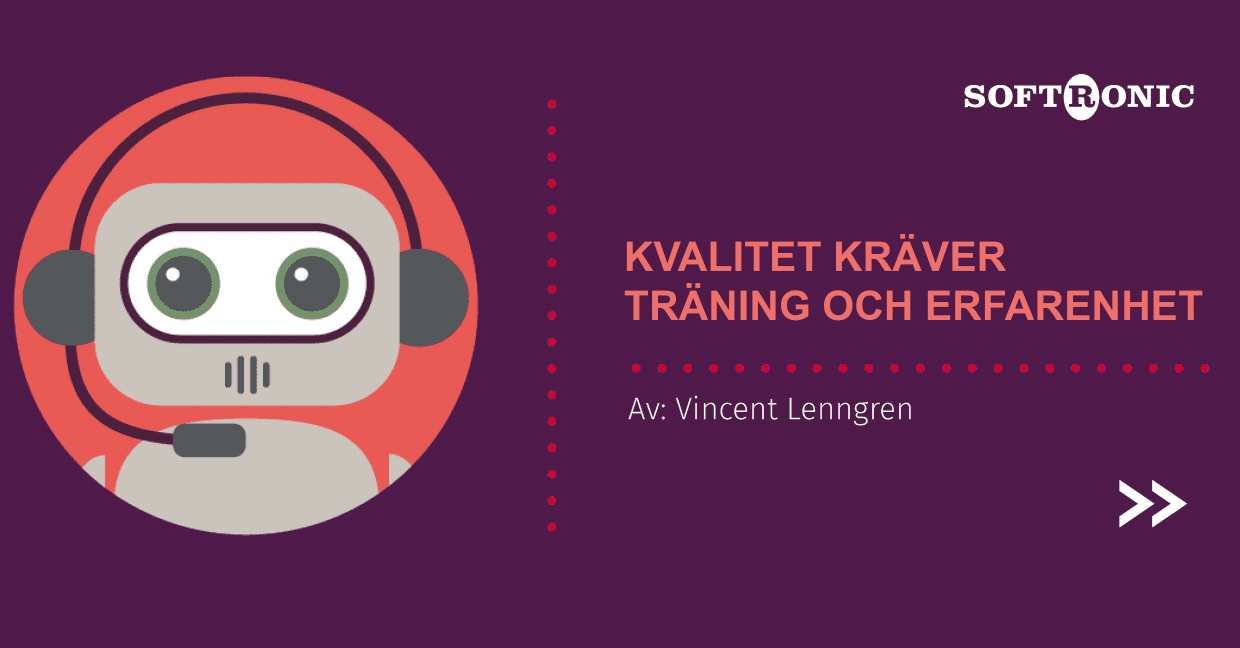If you want to deliver a high-quality chatbot that provides effective support and makes life easier for your customer service, it is important for you to know how a chatbot works and how to train a chatbot.
In this post, Vincent Lenngren reflects on his own role in training a chatbot and the importance of having a team of colleagues to achieve the best possible results.

I work as an analyst and a chatbot trainer for Softronic’s chatbot deliveries. The work is both enjoyable and challenging. I learn something new every day. When I was sitting down, analysing and examining the logs from different chats, I suddenly realised that after my latest training input, the improvements I was expecting had actually resulted in the chatbot getting worse. I wanted to make sure that my reaction was correct, so I started analysing the differences between the most recent logs.
I then contacted two of my colleagues who could both identify a possible error source. We developed an action plan together, which I have now started to follow. The error came from me upsetting the delicate balance when I added several validation sentences from chat logs.
The reason I have shared this example is to show you that the training of a chatbot is now a craft, where many different parameters have to be factored in. You may have to make several attempts and mistakes before you find the best approach. Ultimately, I rely on consulting my colleagues when I come across behaviour that I cannot explain.
This is an example of why it is important to choose a strong partner when introducing a chatbot into your operations.
So when you are faced with a choice of chatbot supplier, this is what you need to consider:
- Do not choose a simple solution to save money; you will quickly come up against limitations and it will end up being more expensive in the long run.
- Set a budget to make sure that your staff become competent in design and training, as this will result in maximum value for the users.
- Choose a supplier who has experience and has done this many times before. The knowledge behind it is extremely valuable.
- Have the courage to deploy it at an early stage, as it is only then that you will see the real benefit of it and you will gain insights into how your users really ask their questions.
I like work that helps me to develop as a person and enjoy understanding how things relate to each other. These are good qualities to have in my role as an analyst and trainer. I also have an incredible team behind me, who support and help me.
You need to have many roles to help you on your journey and to achieve the quality that your users/customers want. For example, AI trainers, developers, project managers and operational consultants – together we have experience that can support you when introducing a chatbot.
Blog post written by Vincent Lenngren for Softronic AB.
